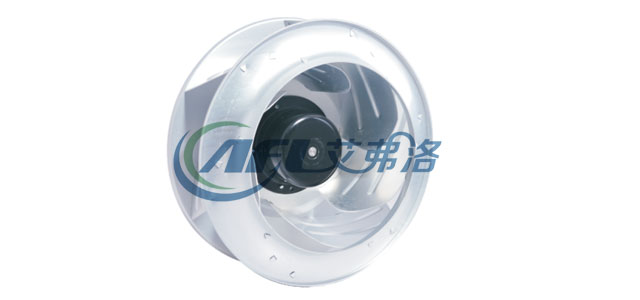What are the technical considerations when designing a centrifugal fan?
From a technical point of view, fan design includes fan […]
From a technical point of view, fan design includes fan type, air volume, wind pressure, fan structure, impeller material, etc. These are all factors that we usually consider at the beginning of the design.
First of all, let me understand the fan. Simply put, the fan is one of the equipment commonly used in various factories and enterprises, especially the application of the fan is more extensive. Fans are indispensable for boiler blowing, smoke reduction and dust removal, and ventilation and cooling. Fans are indispensable and important equipment in power stations, mines, chemical industries and environmental protection projects. Correctly mastering the design of fans is very important to ensure the normal economic operation of fans. important.
The conditions usually given in the design of centrifugal fans are: volumetric flow, total pressure, working medium and its density (or working medium temperature), and sometimes structural requirements and special requirements. The requirements for centrifugal fan design are mostly: the working condition point that meets the required flow and pressure should be near the highest efficiency point; the highest efficiency value should be as large as possible, the efficiency curve should be flat; the stable working range of the pressure curve should be wide; the fan structure should be simple , Good manufacturability; convenient selection of materials and accessories; sufficient strength and rigidity, safe and reliable work; stable operation, low noise; good adjustment performance, strong work adaptability; fan size as small as possible, light weight; convenient operation and maintenance , Easy to disassemble and transport.
However, it is generally impossible to meet all the above requirements at the same time. There are often contradictions between aerodynamic performance and structure (strength, craftsmanship), and the main contradiction is usually resolved through coordination. This requires the designer to choose a reasonable design plan to resolve the main contradiction. For example, with the different uses of fans, the requirements are different. For example, fans used in public buildings are generally used for ventilation. Generally, the most important requirement is low noise. Multi-blade centrifugal fans have this feature; Large-flow centrifugal fans are usually double-suction type; for some high-pressure centrifugal fans, the specific speed is low, and the relative proportion of leakage loss is generally larger.
Several important options for centrifugal fan design:
(1) Reasonable choice of blade type: For common fans at a certain speed, if the pressure coefficient of the backward impeller is smaller, the impeller diameter is larger, and its efficiency is higher; the opposite is true for the forward impeller.
(2) Selection of fan transmission mode: If the transmission mode is A, D, F, the fan speed is the same as the motor speed; while the B, C, and E three are all variable speeds, the fan speed can be selected flexibly during design. Generally, transmission A, which is directly connected to the motor, is widely used for small fans. For large fans, belt transmission is sometimes unsuitable, and transmission modes D and F are mostly used. Under high temperature and dusty conditions, the transmission method should also consider the protection and cooling of the motor and the bearing.
(3) Selection of volute dimensions: the volute dimensions should be as small as possible. For high specific speed fans, a shortened snail shape can be used, and for low specific speed fans, a standard snail shape is generally used. Sometimes in order to reduce the size of the volute, the exit speed of the volute is greater than the inlet speed of the fan. In this case, an exit diffuser is used to increase the static pressure value.
(4) Selection of blade exit angle: The blade exit angle is one of the main geometric parameters that must be selected first in the design. For ease of application, we classify the blades into: strong backward curved blades (water pump type), backward curved arc blades, backward curved straight blades, backward curved airfoil blades; radial outlet blades, radial straight blades; forward curved blades , Strong forward curved blades (multi-wing blades).
(5) The selection of the number of blades: In a centrifugal fan, increasing the number of blades of the impeller can increase the theoretical pressure of the impeller, because it can reduce the influence of relative vortex (that is, increase the K value). However, the increase in the number of blades will increase the friction loss of the impeller channel, which will reduce the actual pressure of the fan and increase the energy consumption. Therefore, for each type of impeller, there is an optimal number of blades. The specific determination of the number of blades is sometimes based on the experience of the designer.
(6) Selection of total pressure coefficient Ψt: When designing a centrifugal fan, the actual pressure is always given in advance. At this time, you need to select the full pressure coefficient.
(7) Determination of the main geometric dimensions of the inlet and outlet of the centrifugal impeller: the impeller is the only element that the fan transmits to the gas energy, so its design has a great influence on the fan; whether the main structure of the impeller can be correctly determined is the key to the performance parameters of the fan effect. It contains the key technology of centrifugal fan design-blade design. The most critical part of blade design is how to determine the blade exit angle β2A. Design analysis of key technologies. When designing a centrifugal fan, the key is to grasp the determination of the outlet angle β2A of the impeller blade.
According to the different blade exit angle β2A, the blades can be divided into three types, namely backward curved blades (β2A<90℃), radial exit blades (β2A=90℃) and forward curved blades (β2A>90℃). Impellers with three types of blades are currently used in fan design. The forward-curved blade impeller is characterized by its small size, weight and low price. The backward-curved blade impeller can improve efficiency and save energy. Therefore, in modern production fans, most large-scale fans with high power use backward-curved blades. The efficiency of the current forward curved blade fan has been significantly improved compared with the old products, so it is still widely used in small flow and high pressure occasions or low pressure and large flow occasions. Radial outlet blades are not commonly used now. In some wind turbines that require wear and corrosion resistance, radial outlet straight blades are often used.
The design of the centrifugal fan impeller must also consider the specific relationship between the specific speed and the blade type. Therefore, when determining the blade outlet angle, the influence of the three blade types on pressure, radial size and efficiency must be comprehensively considered. The correct determination of the outlet angle β2A of the centrifugal fan impeller blade will lay a solid foundation for the determination of other main geometric dimensions of the impeller, which will play a key role in the performance of the entire centrifugal fan.

Hangzhou Airflow Electric Appliances Co.,Ltd, located in Yiqiao town, Xiaoshan District, Hangzhou ,Zhejiang,China, is created by a group of like-minded industry veteran, As a China centrifugal fans manufacturers and centrifugal fans Factory, Our company products are widely used in heating, air conditioning ,refrigeration ,air purification, telecommunications, electric power and other industries.We have a very good R&D environment, strong technical force and professional manufacturing equipment, provide kinds of High quality wholesale centrifugal fans for you.AIRFLOW covering an existing plant area 10000 square meters of production and R&D center about 1000 square meters. Employees are about 100 people, including R&D staff about 40 people. Annual production capacity is about 600,000 units.

